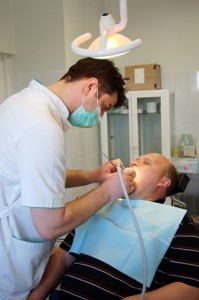
Laughing gas, or nitrous oxide, has been used routinely in dental offices since 1863. It’s a safe, effective sedation option for dental patients seeking a way to control feeling overly anxious about their treatments.
Nearly 75% of American adults experience mild to severe dental anxiety. Causes for dental fears are varied, and may include:
- Previous painful experiences at the dentist’s office
- Dealing with general anxiety, mood, or posttraumatic stress disorders
- Feeling out of control or helpless
- Having low pain threshold or fear of pain
- Embarrassment about the look of teeth
- Phobic about needles and/or anxious about drills
- Sensitive gag reflex
If you do suffer fear or anxiety about dentistry, the good news is that most dentists offer sedation dentistry. One of the most common forms of sedation is nitrous oxide, often referred to as laughing gas.
Nitrous oxide is an odorless gas inhaled through a comfortable mask. Actually, most nitrous oxide machines produce a mixture of 70% nitrous oxide (N20) with 30% oxygen (H20), which keeps the inhalation sedation at safe and effective levels.
Dental patients have reported that breathing in laughing gas creates:
- Light-headedness
- Tingling in arms and legs
- Floating sensations
- A sense of comfortable distance
- Euphoria or giddiness
- Tendency to giggle
In most cases, patients don’t experience side effects from nitrous oxide. A very few may temporarily experience sore throats, inflamed nasal passages, or coughing. You should not feel sleepy, nauseas, or unpleasant in any way. If you do, please tell your dentist so they can adjust the N20 dosage or use a different sedation option.